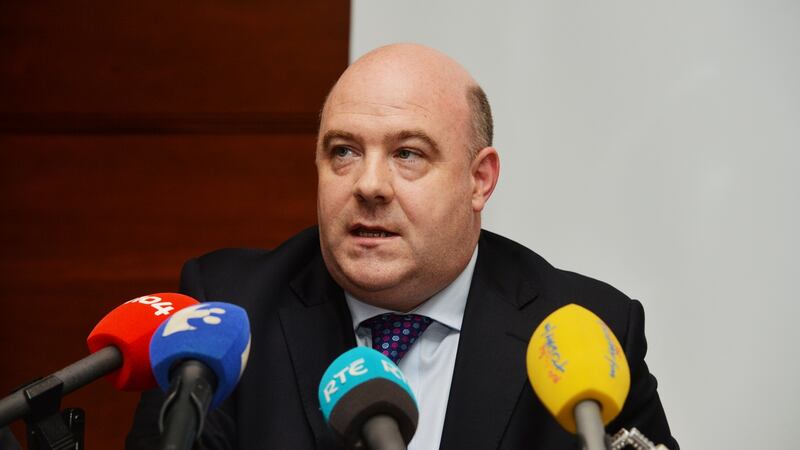The tracker mortgage scandal was described on Wednesday as the "largest scam ever perpetrated on customers in the State" by David Hall of the Irish Mortgage Holders Organisation.
He suggested that the number of people involved could top 45,000, or more than three times the number so far identified by the Central Bank.
The scandal saw thousands of people wrongly taken off tracker mortgages or not offered favourable rates after coming off fixed-rate mortgages. Some people were offered trackers but at rates which were higher than those they were legally entitled to.

Some stories were aired at the Oireachtas finance committee last week, and some people are willing to go public and talk about what happened. Others want their stories aired but are afraid to be identified.
Maeve (not her real name) is one such person. "I need to remain anonymous," she says (her identity is known to The Irish Times). "I fixed my home loan with Bank of Ireland in 2005 for three years and rolled off in 2008 expecting to revert to my tracker. To my horror – and pregnant with my first child – Bank of Ireland told me they wouldn't be honouring my original tracker rate of ECB plus 1 per cent."
In 2012, she and her husband had been fighting with the bank for four years “and had been repeatedly told we were not entitled to have our tracker rate returned. We were in negative equity also. My husband was then contacted by a Bank of Ireland relationship manager who informed us that the bank was offering negative equity trade-up mortgages to their premier customers. We applied for the negative equity trade-up mortgage and the bank approved it but only if we cleared the negative equity.”
New home loan
Six months after the couple drew down the new home loan and closed their old mortgage of almost €500,000, Bank of Ireland told them “they had made an error and that our old home loan was in fact a tracker at 1.0 per cent. We were now on a variable rate of 4.5 per cent on a €550,000 home loan.”
They complained immediately but the bank refused to refund any overpayments – which, she says, amounted to more than €30,000. “The complaint was reviewed by the Financial Services Ombudsman [FSO]and throughout that process the bank continued to hold our money.
"The FSO process was horrendous and gave the bank the excuse to retain our money even longer. I was pregnant throughout this process and the pressure and stress was horrendous. My baby suffered a traumatic injury at her birth and is now disabled. Eventually the FSO ruled in 2014 that the bank had acted wrongfully by not returning our tracker but did not order the bank to return the rate."
She said that to date she has had no contact from the bank in relation to the tracker review.
“The pressure and distress the bank has caused my family is unforgivable. In addition I feel completely let down by the bodies supposed to be protecting consumers – the FSO and the Central Bank.
“I honestly feel Bank of Ireland can do whatever they want and are allowed to get away with it. Meanwhile, we both worked while our children were in creches and missed holidays and social occasions so that we could meet repayments. We continuously have to make sacrifices so that we can afford the medical interventions that my younger daughter requires.”
Standard variable rate
In June 2003, Caitríona Redmond and her husband took out an Ulster Bank tracker on their Balbriggan home. In June 2007, they fixed their mortgage for three years after which they were put on the standard variable rate.
They contacted Ulster Bank and asked to be returned to their tracker rate. “We were told it was no longer available to us as it was no longer offered by the bank.”
She says: “Finances were tight and we had already been in one reduced repayment arrangement. We were pressurised to fix again. I remember sobbing down the phone to the bank more than once at the time.”
In the absence of the tracker rate, the couple fixed for five years at 4.95 per cent. “In the interim, with the increased amount due on the mortgage and my husband being temporarily laid off followed by a new baby in November 2011, things became financial very tight,” and they fell into mortgage arrears.
They entered the Mortgage Arrears Resolution Process (MARP) and with every arrangement repayment, the underpaid interest rolled on to the mortgage capital.
In 2015, the couple again left their fixed rate and reverted to a standard variable rate. A year later, they went on to full mortgage repayments. That was when they became aware of the tracker examination and “realised we should have been on the tracker all along”.
Household income
They also realised that had they been paying the tracker rate, they would not have fallen into arrears. The cost of their fixed-rate mortgage since 2010 swallowed almost 50 per cent of their household income, forcing them to rely on family income supplement.
“I started a letter campaign to Ulster Bank requesting our tracker back. I even gave them copies of our original contract documents. They’d write to me every 60 days stating that their investigations were ongoing.
“Finally, on December 21st, 2016, they agreed that I was right and we should have been on a tracker all along. We went back onto our tracker rate, which represented a reduction every month of approximately €285. Nothing has happened since. It’s crazy to think that the hardship that we’ve been through was needless. That we were tested in a fire not of our making.”











